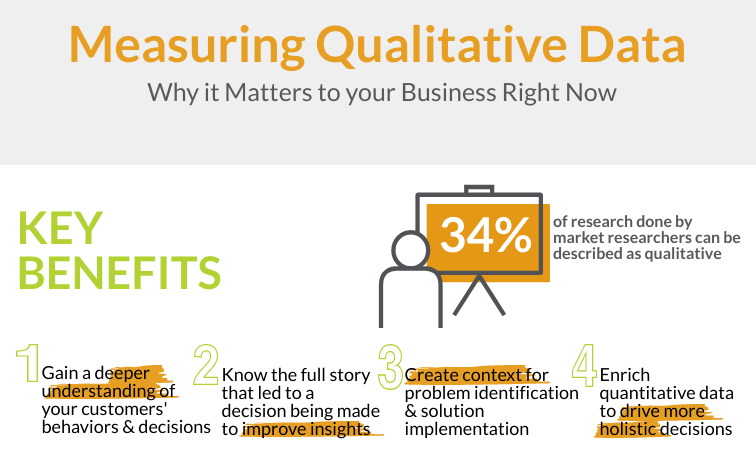In an increasingly data-driven world, where numbers and metrics dominate discussions, qualitative data often takes a backseat. But what exactly is qualitative data, and why is it crucial for understanding human experiences? Have you ever wondered how it captures the nuances of opinions, emotions, and motivations? This article unpacks five essential facts about qualitative data in a clear and straightforward manner.
1. Qualitative Data Focuses on Descriptive Attributes
At its core, qualitative data encompasses non-numerical information that captures the essence of phenomena. It is characterized by attributes, qualities, and features rather than quantifiable measurements. Imagine trying to describe a sunset. You might say, “The colors were breathtaking, with vivid oranges and deep purples blending seamlessly.” This descriptive rich detail represents qualitative data, which helps illuminate experiences that numbers alone cannot convey. The lyrical nature of words can provide depth that simple statistics may obscure.
Qualitative data is often collected using methods such as interviews, focus groups, and open-ended surveys. This approach allows respondents to express their thoughts and emotions freely, resulting in richer, fuller data. However, while it can be incredibly informative, it also raises challenges in analysis and interpretation. How does one effectively navigate the sheer volume of descriptive information gathered?
2. Context is King
Context plays a pivotal role in qualitative data. Each piece of information should be understood within its particular situational frameworks. You wouldn’t judge a book merely by its title; similarly, qualitative findings can be misleading without context. A participant’s opinion on a product may vary significantly based on their cultural background, personal experiences, or even current circumstances. Thus, qualitative data invites us to delve deeper into the ‘why’ behind responses.
For instance, consider qualitative feedback regarding a new restaurant. One customer might rave about the ambiance, while another may lament the service. If one evaluates the feedback without recognizing the situational context, one may miss crucial insights into the restaurant’s overall performance. The interplay of differing perspectives enriches qualitative analysis, leading to a more comprehensive understanding of the subject matter.
3. Subjective Nature Can Be a Double-Edged Sword
While qualitative data excels in capturing diverse human experiences, its subjective nature can be both an asset and a liability. Responses often reflect personal opinions and feelings, making it difficult to achieve objective conclusions. This subjectivity can introduce biases that skew findings in particular directions. For instance, an enthusiastic participant may inflate positive aspects of a product, creating an unrealistic portrayal of consumer satisfaction.
However, this subjectivity also allows for nuanced insights into behaviors and motivations that quantitative data simply cannot provide. Researchers must grapple with the delicate balance between acknowledging personal biases while seeking patterns and themes within the data. Recognizing that qualitative data often represents varied viewpoints is essential to gleaning meaningful conclusions. What strategies can researchers employ to mitigate bias and enhance the reliability of qualitative findings?
4. Flexible Analysis Techniques Enhance Discoveries
One of the remarkable facets of qualitative data is its adaptability in analysis. Unlike quantitative data, which often requires rigid statistical methods, qualitative data can be analyzed using a plethora of flexible approaches. Techniques such as thematic analysis, grounded theory, and narrative analysis enable researchers to explore different dimensions of the data.
Thematic analysis, for example, identifies recurring themes or concepts within the data, unearthing underlying patterns that drive human behavior. Grounded theory, in contrast, builds theories directly from the data itself, leading to innovative understandings that may not have been initially acknowledged. Each approach invites researchers to engage dynamically with their data, making connections that spark new lines of inquiry. Yet, the challenge arises in selecting the most fitting technique. How can one choose the best analytical method when each carries its own set of advantages and limitations?
5. The Richness of Qualitative Data Yields Actionable Insights
The ultimate goal of qualitative data analysis is to distill actionable insights that can inform decision-making processes. Organizations often use qualitative data to guide marketing strategies, product development, and customer service improvements. By understanding customer sentiments and motivations, companies can tailor their offerings to better meet audience needs.
For instance, the qualitative feedback collected from focus groups during a product launch can illuminate potential issues that a purely quantitative survey may overlook. These insights empower businesses to pivot and adjust their strategies to align with consumer expectations effectively. However, the translation of qualitative findings into actionable strategies requires careful consideration—a task that is not without its intricacies. What methodologies exist to bridge the gap between qualitative insights and practical implementations?
In conclusion, qualitative data serves as a powerful complement to quantitative analysis. By embracing its subtlety and complexity, researchers can uncover the rich tapestry of human experiences, preferences, and motivations. The interplay of descriptive attributes, context, subjectivity, flexible analysis techniques, and actionable insights reflects the multifaceted nature of qualitative data. As organizations increasingly recognize its value, the challenge remains: how can we effectively harness qualitative data to drive meaningful change? Through thoughtful inquiry and interpretation, the potential is limitless.









